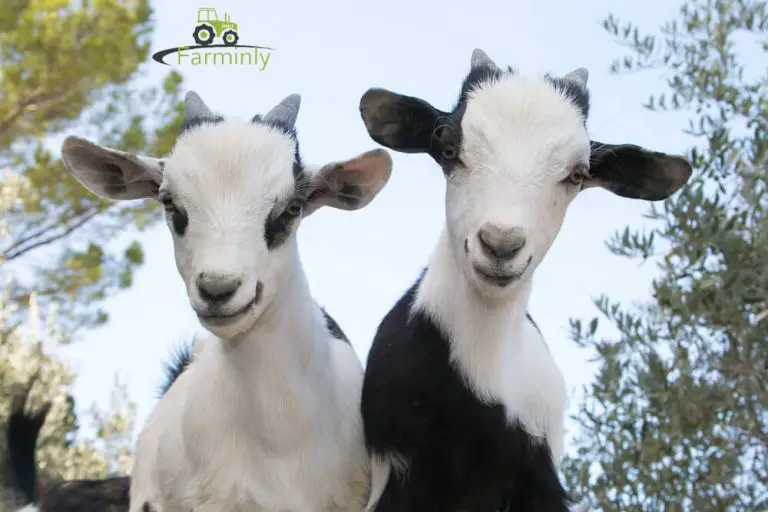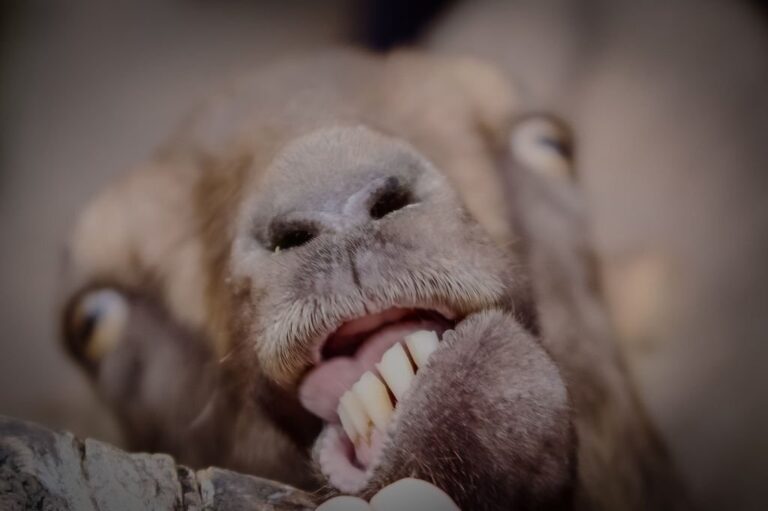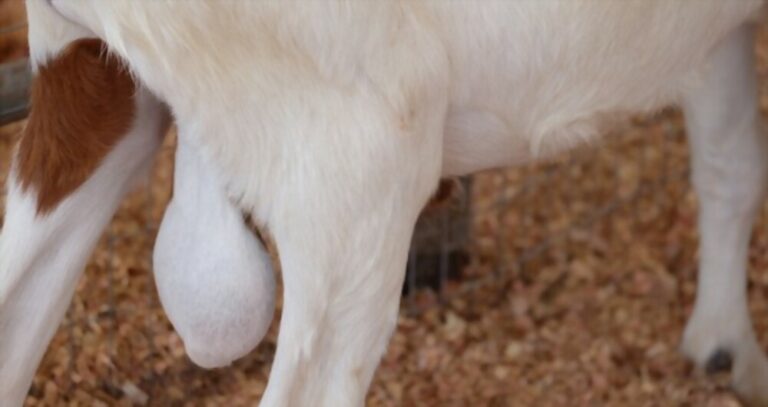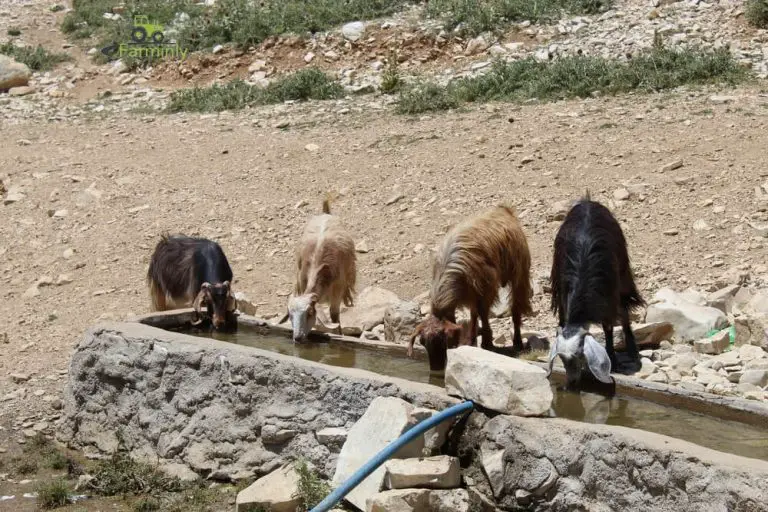How Can You Tell if a Goat is Just Pregnant or Just Fat? This article covered everything from early goat pregnancy signs to the signs of labor in female goats.
Identifying a bloated goat (fat) from a pregnant goat isn’t as easy. To identify one, you have to understand that goats, on a natural base, have large stomachs. They have a four-chambered tummy with lots of gaseous activity, making their stomach bloated.
If you notice that your goat’s stomach is bigger than usual, there are two things you need to find out. It is whether your goat has added weight or it is pregnant. The signs of a fat goat with a bloated stomach differ from those of a pregnant goat.
How to tell if your goat is pregnant or just fat
When a goat has a bloated stomach, the goat is a bit uncomfortable, and you will notice that the stomach gets wider, especially on the left side – most times, bloating results when there is a change in the goat’s diet, resulting in increased weight.
Because most bloating results from increased weight, you can notice that the goat may begin to have trouble breathing, which a pregnant goat does not experience. In this case, you should immediately consult the vet doctor.
So if your goats show the above signs, there is no need to carry out a pregnancy test on the goat.

Signs of Goat Pregnancy
Now, let’s look at the characteristics of a pregnant goat
- Squatting of hind legs: A pregnant goat tends to squat its hind legs, which frequently happens a few days before kidding.
- Increased in appetite: A pregnant doe experience surge in appetite. The goat’s daily food intake keeps increasing as she enters the final stages of pregnancy. If the doe is a dairy goat, her milk production decreases considerably during pregnancy.
- Change in the doe’s personality: Progesterone is suddenly released when a doe is pregnant. This hormone is responsible for the complete change or reversal in the personality of the doe. However, this personality reversal lasts only during goat pregnancy, and if a doe is kept together with a male goat after breeding, the male goat may experience personality reversal.
- Failure to return to heat: A pregnant doe won’t return to heat. This is why you should know the heat cycle of your goat. It usually ranges from 17 to 25 days. When the doe is pregnant, she can show signs of estrus during the heat cycle or two, but it won’t be strong as usual, and she shows little or no interest in the male goat.
- The doe’s belly tightens: The belly of a pregnant doe tightens two weeks after she gets pregnant. You can easily detect this by firmly pressing your fingers against her belly at the front of her udder. When you apply your fingers, you will feel that the stomach is tight and tense.
- The doe barrel swells: In some pregnant goats, their barrel starts filling immediately after they get pregnant, while in others, it is until in a couple of months, and sometimes it can be overnight. It depends on the specie of the goat. To measure if the doe barrel has swollen up, measure the doe girth by measuring the barrel diameter just behind the front legs. You can easily detect the gradual increase of the barrel monthly.
- The doe snores loudly: Naturally, goats snore when they sleep or rest, especially while taking a siesta during the summer. However, if a goat is pregnant, she snores more loudly and frequently than usual. Trust me, and it can be funny. Imagine visiting your barn and being welcomed by the loud snores of pregnant goats.
- The doe’s udder swells: If it is the doe’s first pregnancy, the Udder develops about six weeks after pregnancy and is fully rounded by 12 weeks. If the doe has a kid before, the udder swells after some days or months.
- The kid begins to move: The fetal movements of the kid kick off in the doe from three to four months after breeding. You can place your hands on the belly of the doe and feel the movement.
However, the most accurate way to tell if a doe is pregnant is to run some pregnancy tests on the doe. There are two types of pregnancy tests out there. Choose the one that suits your doe. You can decide to carry out the test by testing the blood sample or the milk sample of the goats.
If you are going for the latter option, testing by milk sample, you must send a pure sample to the vet. The most vital part of this test is to ensure 100% that the sample you send for testing should be pure.
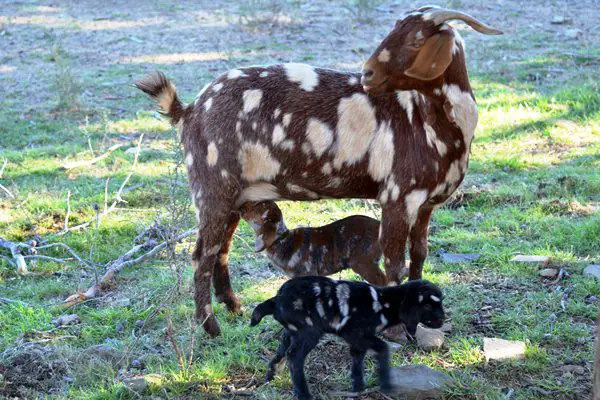
Ensure you scrub your hands with soap and water for at least 20 seconds to prevent bacteria into the sample. Also, the udder should be adequately cleaned with warm water and mild soap to ensure that the milk sample is pure.
The milk sample should be sent immediately after testing so there will not be an allowance for any mistakes. The milk pregnancy sample method is easier than the blood pregnancy test of the goats, but the limitation here is that you only use it on a doe that has given birth before. Also, doe that is milked regularly can be tested using this method.
For the blood pregnancy test, just the same way, you use a syringe to remove blood from the hands of a human; that is the same thing you do here. If you have no experience using syringes to draw blood, please don’t do it. Seek professional help.
Can you feel the kids moving?
For the first five weeks after breeding, you cannot feel the pregnancy of a doe. Naturally, the doe does not show any vital signs of pregnancy during the first five weeks.
After five weeks, you can press your fingers correctly on the doe’s stomach to feel it. If the goat is pregnant, the belly will tighten a bit.
After three or four months of breeding, the doe begins to experience the kid’s movement in her stomach. As a goat owner, you can also place your hands on the doe and remain there for a long time to feel the kid’s movement. The doe experiences the kicking of the kid regularly.
When a doe is pregnant, she reduces milking. A doe not ready to kid will have a strong tail ligament; you can point this out through observation.
When the day of labor draws closer, you can observe that the tail ligament begins to loosen up. When the tail ligaments become soft, it indicates that the doe will kid in a day. So basically, the tail figment helps you tell how far the goat has grown in her pregnancy and how close she is to kids.
Conclusion
When your doe is pregnant, ensure you feed her with a rich nutritious diet, and if you notice any abnormality, do consult the vet doctor immediately.
Being overweight can lead to obesity which can affect the goat’s health. If you notice that the belly of your goat is bloated out, check the diet and immediately change it. If it is serious, pleases do consult the vet doctor immediately.



